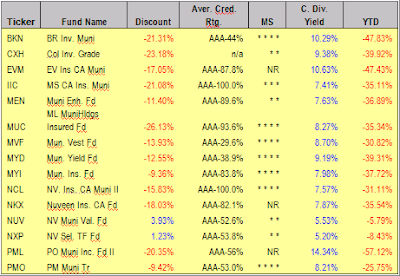 The upcoming Obama bailout plan has made headlines recently as the size of the future spending endeavor seems to increase in direct proportion to daily worsening economic news.
The upcoming Obama bailout plan has made headlines recently as the size of the future spending endeavor seems to increase in direct proportion to daily worsening economic news.
24/7 Wall Street featured a piece called “The Obama Bailout Plan: Spending Beyond The Imagination.”
Let’s look at some highlights:
It has occurred to the administration-in-waiting that every day that passes, every day between now and the January 20 swearing in, is a day in which the diving economy accelerates it move down.
There has not been a single figure on unemployment, housing, or consumer spending that would lead economists to believe that 2009 will be better than this year. As a matter of fact, a consensus is forming that it could be much, much worse.
According to Bloomberg, Christina Romer, Obama’s pick to head the Council of Economic Advisers said “that the economy is likely to lose 3 million to 4 million jobs over the next year and the unemployment rate is likely to rise to above 9 percent.” If that is true, the current Obama plan to put $675 million to $775 billion into the economy, primarily by creating jobs through building out infrastructure for information, medical technology, education, energy transport, and broadband will not be nearly enough.
Experts are beginning to think that the size of the rescue package will have to be closer to $1 trillion, a figure which would have been almost unimaginable a year ago when some still hoped that there would be no recession at all or that a recession would be shallow and short. The amount is so staggeringly large that there is a great deal of debate about how the federal government will come up with the capital unless it wants to push an astonishingly high tax burden onto businesses and individuals. This tax burden could start to come due in just a few years if there is any hope of bringing the federal deficit down before the middle of the next decade.
One of the potential weaknesses of the bailout is that it may be big enough but implementing it may take so long that it will do nothing to reverse the employment and housing problems before very late next year. Setting up and managing programs to build roads and schools will take months.
This rescue of the economy is going to be the largest federal program in history. That being the case, it would be good if it could be given every opportunity to work.
The only way to create or save jobs quickly is to give incentives to businesses which are already in operation. Creating institutions to hire people may be noble, but it is painfully slow. The $1 trillion needs to be put to work in as few months as possible.
The best way to create jobs is to give employers huge incentives to hire people. One alternative would be for the government to pay a percentage of the first year salaries of any new employee a company brings on board. All the firms would have to do is prove employment though tax withholding documents. The government might offer to pay 50% of salaries up to a total of $50,000. That means the benefits would help a range of people from the very poor up to the higher end of the middle class. Each of the new jobs creates a new taxpayer. That at least cycles some income back to the federal government.
A trillion dollars may be enough to save the American economy. No one will know that for at least two or three years. Putting the money into the system at the rate that averages well under $50 billion a month over twenty four months won’t cut it. Things are going to hell far too fast.
To me, any government effort to apply a trillion dollars to job creations will have to involve a gigantic bureaucracy to oversee and implement a huge number of projects. Farming this out to private industries will most likely be the way to go, although I have my doubts as to whether this government sponsored enterprise will yield the desired results.
Let’s be positive and assume the expected job creations are realized and the trillion dollars is spent within 18 months or so. What will happen to the bureaucratic structure that has been built? Governments don’t dismantle any part of themselves, which means the taxpayer gets to foot the bill to keep another useless government entity alive.
If this project fails, we will have mortgaged future generations with an unimaginable amount of money, when considering all of the government bailout plans, which may never get repaid.
Unfortunately, all assumptions are based on the (erroneous) fact that there will be a “V” type recovery, after which happy days are here again, so we all can participate again in the next real estate/credit orgy.






